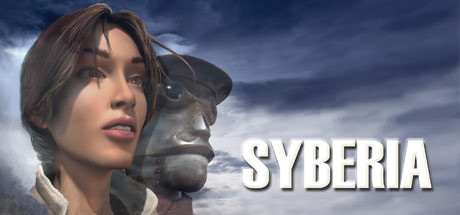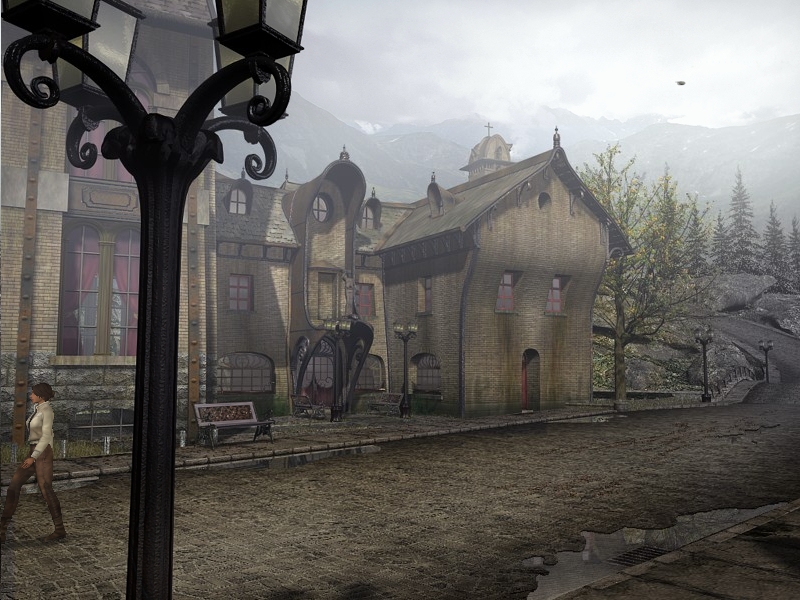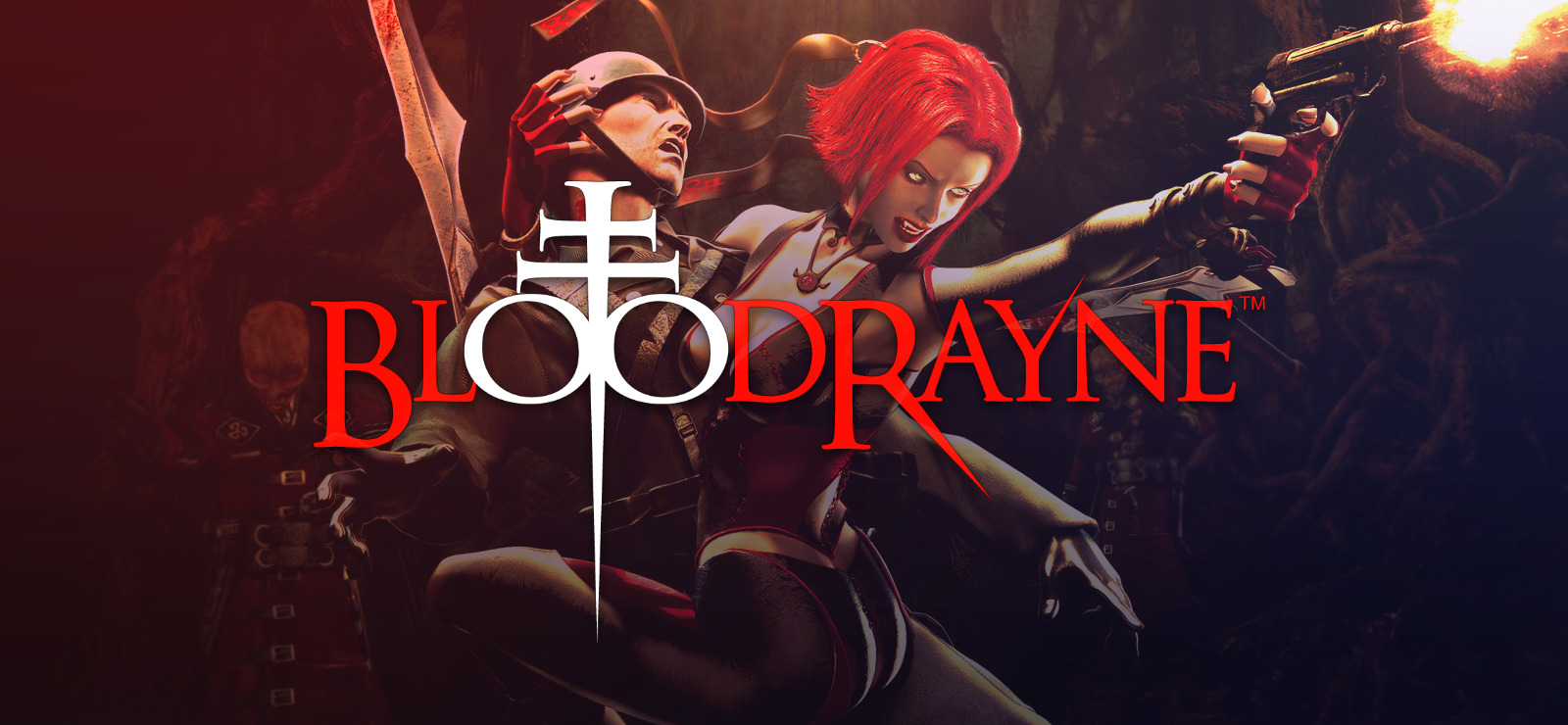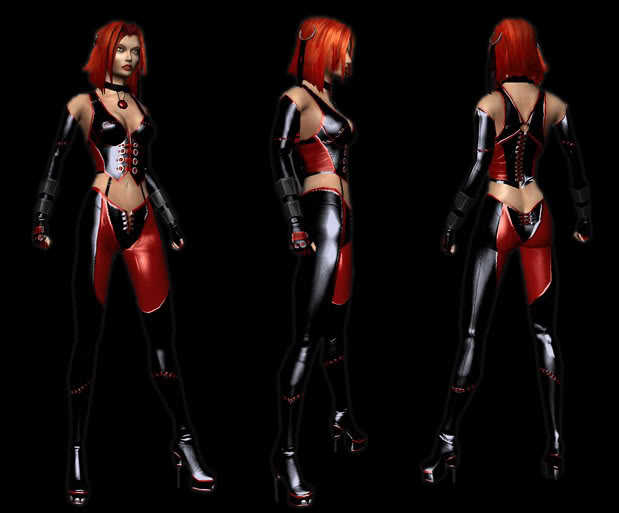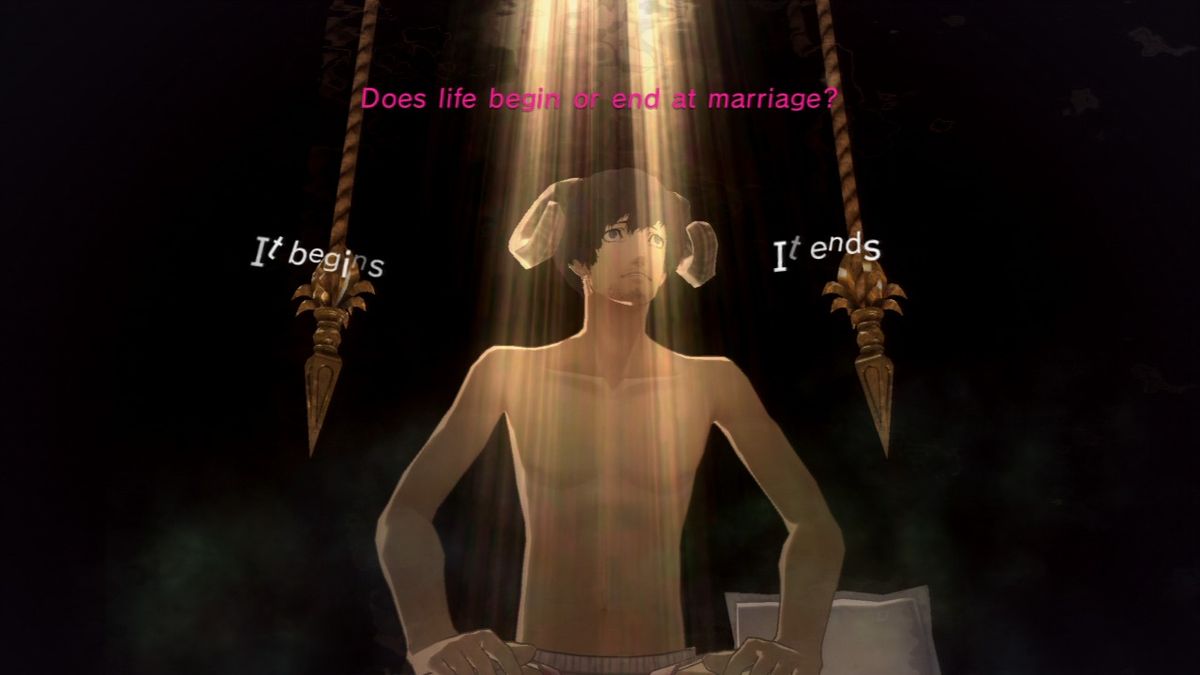FairFriend
Member
Hi there GAF! A few months ago I made the decision of not buying any new game in order to focus on my backlog. Up until now my will has been strong but recently, in part due to the many sales, my determination has been wavering. So, in an effort to strengthen my volition, since I've always enjoyed writing, I decided to write down my impressions about the games that I complete as I go through my backlog.
In addition to that I thought that it would make for an interesting experiment to let you know the games that I still need to finish, so that you can vote on the next title that I should tackle (the votes appear in the brackets next to the titles). I hope that in this way you'll look forward to my updates!
The games that I have completed since I pledged not to buy any new game are:
Fear Effect (Review in this post)
Syberia (15/05/2017 post 4)
BloodRayne (29/05/2017 post 5)
Catherine (16/05/2017 post 8)
Doom II (02/09/2017 post 11)
Metro 2033 (04/09/2017 post 12)
Alice Madness Returns (05/10/2017 lttp thread)
The ones that I'm working on and whose reviews you should expect to read soon are (GROUP A):
Blood Omen
Blood Omen II
Doom II
Syberia II
The ones in which I've already made some progress but I'm not actively playing (GROUP B):
Blood
Final Fantasy VIII
Clive Barker's Undying
Alice: Madness Returns
Condemned: Criminal Origins
Quake II
Persona 3 Portable [1]
Zone of the Enders II
Catherine [1]
Final Fantasy XIII
Siren Blood Curse
Metro 2033
Valkyria Chronicles
The ones in the backlog are (GROUP C):
[PC]
Oddworld: Munch's Oddysee
Red Faction: Guerilla
Hitman: Blood Money
The Witcher 1
Max Payne
Max Payne II
Doom III
Aliens versus Predator 2000
Anachronox
Outcast
Return to Castle Wolfenstein
Legacy of Kain: Defiance
Legacy of Kain: Soul Reaver II
Deus Ex II Invisible War
Thief: Deedly Shadows
Beyond Good & Evil
No One Lives Forever 2
The Elder Scrolls IV: Oblivion
Painkiller
Call of Cthulhu: Dark Corners of the Earth
The Thing
Far Cry
Sherlock Holmes Mistery of the Mummy
Gothic II
Arcanum
Simon the Sorcerer 4
[PSVITA]
Stranger of Sword City
Toukiden Kiwami
Dokuro
Castlevania: Symphony of the Night
Sega MegaDrive Collection (has tons of old titles, for a list check the wikipedia page – please mention only one of said titles)
Finally there are games that I was gifted or that were given away for free for a limited time. As such these titles have lower precedence from my point of view, but you can vote them too! (GROUP D)
[PC]
Half-Life: Blue Shift
Half-Life: Opposing Force
DiRT 3
Galactic Civilizations I
Starcraft
Consortium
The Elder Scrolls: Arena
The Elder Scrolls: Daggerfall
Little Big Adventure 2
Saints Row 2
System Shock 2
Beneath a Steel Sky
Dragonsphere
Lure of the Temptress
Teenagent
Tyrian 2000
You can vote every game from group B, C or D – but you can name only one title! It goes without saying that I'd personally start with the games in which I've already made some progress (group B), but I'll try to stick as close as possible to your recommendations. I will also update this post with the votes, which I'll put next to the titles, so that you can track which games are the more popular.
And now onto the first review!
Fear Effect

Fear Effect is a product of its time, from many different points of view. It came out in the late 90s for the PSONE and, as many other horror games of the era, it features tank controls and pre-rendered backgrounds. Nonetheless Fear Effect is a game that manages to result very original thanks, at least in part, to the gorgeous art direction and the mature storyline (though keep in mind that these were the 90s and the adjective mature was to some degree inextricably linked with edgy).
In discussing the merits of Fear Effect I'd like to start with the two staples of the genre that I mentioned earlier: tank controls and pre-rendered backgrounds.
In regards to the former it must be noticed that Fear Effect does make a few adjustments to the original formula pioneered by the first Resident Evil. Firstly we have a dedicated button for a 180 degrees turn, which was introduced only in Resident Evil III if memory serves. More over there's another button which, in conjunction with the directional cross, allows the player to make the protagonists roll in one of the four directions. Both these manoeuvres are of vital importance in order to win the most intense battles: rolling allows the characters to dodge every attack and later in the game a certain kind of enemy will be able to jump from one end of the stage to the other in an instant, thus forcing the player to make good use of the 180 degrees turn. Other minor betterments include the ability to target two enemies simultaneously – which again becomes very important when facing multiple foes – and a dedicated stealth mode button. In stealth mode the player's avatar can sneak behind most of the enemies and finish them using hand weapons. Killing the enemies silently has multiple benefits, apart from the obvious one of not being detected. Firstly ammunition is pretty scarce in the first three discs, therefore the player is encouraged to make use of the guns as little as possible. Secondly whenever the player scores a stealth kill the fear level decreases a little bit.

On the upper left the star of the show, so to say: the fear level.
The reticle appears whenever the playable character locks on an enemy. Useful not to waste ammo on out of reach targets.
This leads me to another peculiar mechanic, the aforementioned fear level. You see, in Fear Effect there is no life bar and as a consequence no medipacks nor plants that can cure the characters. Instead what we've got is the fear level which increases whenever the protagonists are hit or find themselves in perilous situations. Conversely the fear level decreases whenever something good happens to the characters: if the player manages to beat a boss, of if she finds additional ammunition hidden somewhere in the level or if she kills a guard stealthly, then the fear level decreases.
At first the fear level may seem like little more than an expedient to differentiate the game from Resident Evil and its many clones, but in reality its real purpose is that of tying together many different systems, which otherwise would make for a pretty jarring gameplay.
Take for instance the aforementioned stealth sequences: it goes without saying that Fear Effect lacks the depth of Metal Gear Solid. In addition to that the 2D environments and the static camera angles more often than not get in the way of the player, thus making the act of killing an unsuspecting enemy more challenging that it should be. Nonetheless the sequences manage to be enjoyable for the direct effect that they have on the fear level: killing an enemy using a fire weapon does not have the same beneficial consequence on the fear level than doing so without being noticed has. Thus the fear level mechanic forces the player to approach the level very carefully. Sometimes you'll find yourself scouting for enemies not necessarily because you're lacking ammunition, but because you're trying to lowering the fear level by assassinating them, in anticipation of a particularly intense gun fight that lays ahead.
One can't talk about Fear Effect without mentioning the beautiful, albeit technically dated, backgrounds. The one thing that distinguishes them is that they are fully animated. This means that every background will feature futuristic cars flying over the character's heads, light shafts casting ominous shadows on derelict walls and many more touches which give the game a very unique artistic flair. Nonetheless, even though the compression technology must have been very good at the time, artifacts abound and it is very easy to tell the exact moment when one of the animated backgrounds loops and starts again from the beginning. Finally I can't help but wondering why Kronos Studios didn't opt for a more selective approach: they could have had two different layers, one fully static and another one containing the animated elements, which would be relatively fewer that those static. In other words I think that they should have taken a look at how the same identical problem is solved in animation: it's well known that the animated part of the sceneries and the background proper are composed together only in the end, and the latter can receive more attention because it doesn't need to be modified every new frame.
Anyway, a part from the technical considerations, there'se no denying that the art direction of Fear Effect is nothing short of breathtaking, and I will concede that the animated backgrounds greatly help in bringing the artists' vision to life.
The nature of said backgrounds plays also a major role in the gameplay. Indeed, Fear Effect is infamous for the abundance of traps and segments which can be passed only by the application of the trial and error method. They are very reminiscent of the days of games such Dragon's Lair. As every other element of Fear Effect, their reason of being is justified by their interaction with the fear level. In fact, whenever the player manages to beat one of these segments, the fear level goes down a little bit, or is completely restored to its default value. Needless to say this reward parallels very well the sense of relief that the player experiences when avoiding a trap, just like the fear level system makes for a quite accurate detector of the player's stress when trying to figure out, for the n-th time, how to have the better hand of that certain boss. In other words everything in Fear Effect, from the scarcity of ammunition to the omnipresence of traps, has some kind of bearing of the fear level and reinforces the link between the player and the avatar, almost to the point of breaking the fourth wall.
In closing this little review I think it is important to note some of the most glaring problems that the game has. Puzzles, for instance, are of the inscrutable variety. The moment you realize the reasoning behind their workings you will solve them in no time: usually they are confined in one single room, which means that you won't have to backtrack all the way to the start of the level, like in many other adventure titles. The real problem lies in the fact that the logic of their solutions is oftentimes concealed by the presentation, that is to say too few visual and audio clues are given to the player in order to simply understand what the game is asking you too do. I will admit readily that more often than not I had to resolve to the reading of an online walkthrough, even though I'd consider myself a seasoned player, having finished many games that are in no shortage of intricate puzzles, like the old Tomb Raiders made by Core Design.
With that said I'm confident that many will find the control scheme to be antiquated, but objectively speaking Fear Effect doesn't fair any worse in this regard than your typical Resident Evil. Nonetheless there is one major criticism which needs to be mentioned, so much that the developers themselves felt the necessity of addressing it in Fear Effect 2: every time you die the game needs to be reloaded, and loading times are not particularly short, to put it mildly. This defect is acerbated but the trial and error approach that the game forces on the player in many different scenarios, from boss battles to the exploration of new areas.
Fear Effect is not for the faint of heart, and much of it charm comes from the wonderful art direction, which nonetheless suffers from the limitations of the technology employed to compress the pre-rendered backgrounds. The strength of the gameplay lies in how tightly its many systems are linked by the dynamics of the fear level, but the subtlety of it all may be lost on the modern player simply in search of some good old fun.
- - -
Whew! This review of sorts went on much longer than I had anticipated, therefore I'll post the other two (Syberia and BloodRayne) at a later time. I must confess that I am too much eager to read your opinions on Fear Effect, and of course to find out which game you want me to start playing next!
In addition to that I thought that it would make for an interesting experiment to let you know the games that I still need to finish, so that you can vote on the next title that I should tackle (the votes appear in the brackets next to the titles). I hope that in this way you'll look forward to my updates!
The games that I have completed since I pledged not to buy any new game are:
Fear Effect (Review in this post)
Syberia (15/05/2017 post 4)
BloodRayne (29/05/2017 post 5)
Catherine (16/05/2017 post 8)
Doom II (02/09/2017 post 11)
Metro 2033 (04/09/2017 post 12)
Alice Madness Returns (05/10/2017 lttp thread)
The ones that I'm working on and whose reviews you should expect to read soon are (GROUP A):
Blood Omen
Blood Omen II
Syberia II
The ones in which I've already made some progress but I'm not actively playing (GROUP B):
Blood
Final Fantasy VIII
Clive Barker's Undying
Condemned: Criminal Origins
Quake II
Persona 3 Portable [1]
Zone of the Enders II
Final Fantasy XIII
Siren Blood Curse
Valkyria Chronicles
The ones in the backlog are (GROUP C):
[PC]
Oddworld: Munch's Oddysee
Red Faction: Guerilla
Hitman: Blood Money
The Witcher 1
Max Payne
Max Payne II
Doom III
Aliens versus Predator 2000
Anachronox
Outcast
Return to Castle Wolfenstein
Legacy of Kain: Defiance
Legacy of Kain: Soul Reaver II
Deus Ex II Invisible War
Thief: Deedly Shadows
Beyond Good & Evil
No One Lives Forever 2
The Elder Scrolls IV: Oblivion
Painkiller
Call of Cthulhu: Dark Corners of the Earth
The Thing
Far Cry
Sherlock Holmes Mistery of the Mummy
Gothic II
Arcanum
Simon the Sorcerer 4
[PSVITA]
Stranger of Sword City
Toukiden Kiwami
Dokuro
Castlevania: Symphony of the Night
Sega MegaDrive Collection (has tons of old titles, for a list check the wikipedia page – please mention only one of said titles)
Finally there are games that I was gifted or that were given away for free for a limited time. As such these titles have lower precedence from my point of view, but you can vote them too! (GROUP D)
[PC]
Half-Life: Blue Shift
Half-Life: Opposing Force
DiRT 3
Galactic Civilizations I
Starcraft
Consortium
The Elder Scrolls: Arena
The Elder Scrolls: Daggerfall
Little Big Adventure 2
Saints Row 2
System Shock 2
Beneath a Steel Sky
Dragonsphere
Lure of the Temptress
Teenagent
Tyrian 2000
You can vote every game from group B, C or D – but you can name only one title! It goes without saying that I'd personally start with the games in which I've already made some progress (group B), but I'll try to stick as close as possible to your recommendations. I will also update this post with the votes, which I'll put next to the titles, so that you can track which games are the more popular.
And now onto the first review!
Fear Effect

Fear Effect is a product of its time, from many different points of view. It came out in the late 90s for the PSONE and, as many other horror games of the era, it features tank controls and pre-rendered backgrounds. Nonetheless Fear Effect is a game that manages to result very original thanks, at least in part, to the gorgeous art direction and the mature storyline (though keep in mind that these were the 90s and the adjective mature was to some degree inextricably linked with edgy).
In discussing the merits of Fear Effect I'd like to start with the two staples of the genre that I mentioned earlier: tank controls and pre-rendered backgrounds.
In regards to the former it must be noticed that Fear Effect does make a few adjustments to the original formula pioneered by the first Resident Evil. Firstly we have a dedicated button for a 180 degrees turn, which was introduced only in Resident Evil III if memory serves. More over there's another button which, in conjunction with the directional cross, allows the player to make the protagonists roll in one of the four directions. Both these manoeuvres are of vital importance in order to win the most intense battles: rolling allows the characters to dodge every attack and later in the game a certain kind of enemy will be able to jump from one end of the stage to the other in an instant, thus forcing the player to make good use of the 180 degrees turn. Other minor betterments include the ability to target two enemies simultaneously – which again becomes very important when facing multiple foes – and a dedicated stealth mode button. In stealth mode the player's avatar can sneak behind most of the enemies and finish them using hand weapons. Killing the enemies silently has multiple benefits, apart from the obvious one of not being detected. Firstly ammunition is pretty scarce in the first three discs, therefore the player is encouraged to make use of the guns as little as possible. Secondly whenever the player scores a stealth kill the fear level decreases a little bit.

On the upper left the star of the show, so to say: the fear level.
The reticle appears whenever the playable character locks on an enemy. Useful not to waste ammo on out of reach targets.
This leads me to another peculiar mechanic, the aforementioned fear level. You see, in Fear Effect there is no life bar and as a consequence no medipacks nor plants that can cure the characters. Instead what we've got is the fear level which increases whenever the protagonists are hit or find themselves in perilous situations. Conversely the fear level decreases whenever something good happens to the characters: if the player manages to beat a boss, of if she finds additional ammunition hidden somewhere in the level or if she kills a guard stealthly, then the fear level decreases.
At first the fear level may seem like little more than an expedient to differentiate the game from Resident Evil and its many clones, but in reality its real purpose is that of tying together many different systems, which otherwise would make for a pretty jarring gameplay.
Take for instance the aforementioned stealth sequences: it goes without saying that Fear Effect lacks the depth of Metal Gear Solid. In addition to that the 2D environments and the static camera angles more often than not get in the way of the player, thus making the act of killing an unsuspecting enemy more challenging that it should be. Nonetheless the sequences manage to be enjoyable for the direct effect that they have on the fear level: killing an enemy using a fire weapon does not have the same beneficial consequence on the fear level than doing so without being noticed has. Thus the fear level mechanic forces the player to approach the level very carefully. Sometimes you'll find yourself scouting for enemies not necessarily because you're lacking ammunition, but because you're trying to lowering the fear level by assassinating them, in anticipation of a particularly intense gun fight that lays ahead.
One can't talk about Fear Effect without mentioning the beautiful, albeit technically dated, backgrounds. The one thing that distinguishes them is that they are fully animated. This means that every background will feature futuristic cars flying over the character's heads, light shafts casting ominous shadows on derelict walls and many more touches which give the game a very unique artistic flair. Nonetheless, even though the compression technology must have been very good at the time, artifacts abound and it is very easy to tell the exact moment when one of the animated backgrounds loops and starts again from the beginning. Finally I can't help but wondering why Kronos Studios didn't opt for a more selective approach: they could have had two different layers, one fully static and another one containing the animated elements, which would be relatively fewer that those static. In other words I think that they should have taken a look at how the same identical problem is solved in animation: it's well known that the animated part of the sceneries and the background proper are composed together only in the end, and the latter can receive more attention because it doesn't need to be modified every new frame.
Anyway, a part from the technical considerations, there'se no denying that the art direction of Fear Effect is nothing short of breathtaking, and I will concede that the animated backgrounds greatly help in bringing the artists' vision to life.
The nature of said backgrounds plays also a major role in the gameplay. Indeed, Fear Effect is infamous for the abundance of traps and segments which can be passed only by the application of the trial and error method. They are very reminiscent of the days of games such Dragon's Lair. As every other element of Fear Effect, their reason of being is justified by their interaction with the fear level. In fact, whenever the player manages to beat one of these segments, the fear level goes down a little bit, or is completely restored to its default value. Needless to say this reward parallels very well the sense of relief that the player experiences when avoiding a trap, just like the fear level system makes for a quite accurate detector of the player's stress when trying to figure out, for the n-th time, how to have the better hand of that certain boss. In other words everything in Fear Effect, from the scarcity of ammunition to the omnipresence of traps, has some kind of bearing of the fear level and reinforces the link between the player and the avatar, almost to the point of breaking the fourth wall.
In closing this little review I think it is important to note some of the most glaring problems that the game has. Puzzles, for instance, are of the inscrutable variety. The moment you realize the reasoning behind their workings you will solve them in no time: usually they are confined in one single room, which means that you won't have to backtrack all the way to the start of the level, like in many other adventure titles. The real problem lies in the fact that the logic of their solutions is oftentimes concealed by the presentation, that is to say too few visual and audio clues are given to the player in order to simply understand what the game is asking you too do. I will admit readily that more often than not I had to resolve to the reading of an online walkthrough, even though I'd consider myself a seasoned player, having finished many games that are in no shortage of intricate puzzles, like the old Tomb Raiders made by Core Design.
With that said I'm confident that many will find the control scheme to be antiquated, but objectively speaking Fear Effect doesn't fair any worse in this regard than your typical Resident Evil. Nonetheless there is one major criticism which needs to be mentioned, so much that the developers themselves felt the necessity of addressing it in Fear Effect 2: every time you die the game needs to be reloaded, and loading times are not particularly short, to put it mildly. This defect is acerbated but the trial and error approach that the game forces on the player in many different scenarios, from boss battles to the exploration of new areas.
Fear Effect is not for the faint of heart, and much of it charm comes from the wonderful art direction, which nonetheless suffers from the limitations of the technology employed to compress the pre-rendered backgrounds. The strength of the gameplay lies in how tightly its many systems are linked by the dynamics of the fear level, but the subtlety of it all may be lost on the modern player simply in search of some good old fun.
- - -
Whew! This review of sorts went on much longer than I had anticipated, therefore I'll post the other two (Syberia and BloodRayne) at a later time. I must confess that I am too much eager to read your opinions on Fear Effect, and of course to find out which game you want me to start playing next!

